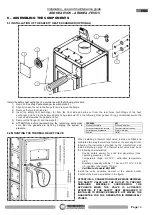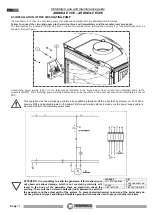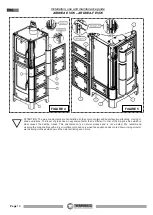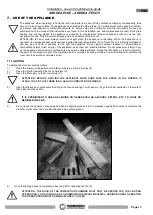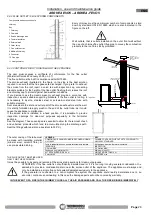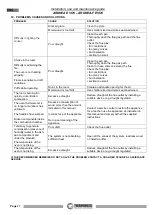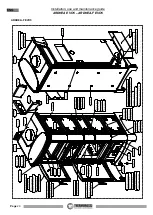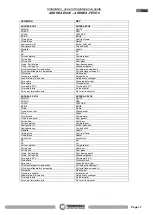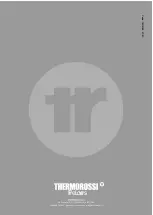
Installation, use and maintenance guide
ARDHEA EVO5
– ARDHEA-F EVO5
Page
23
ENG
8 - CLEANING AND MAINTENANCE
8.1 FOREWORD
To guarantee correct operation and optimal performance of the appliance at all times carry out the operations
described below. Observe the recommended frequency.
If the product is unused for a prolonged period of time before starting up, it is mandatory to inspect the smoke
channel and outlet to ensure that there are no obstructions. It is important to carefully follow the instructions set out
below: failure to observe these instructions could cause serious damage to the product, to the system, to objects and
to persons using the appliance.
Attention: do not wet or touch the appliance with wet hands. Never vacuum hot ash: this could damage the vacuum
device. All the cleaning operations described in this manual must be carried out when the appliance is cold.
The user must periodically clean the appliance, or have an authorised service centre clean it, as described in this manual.
Moreover, once a year it is advisable to have an inspection carried out of the functionality of the flue outlet.
8.2 CLEANING AND MAINTENANCE
EVERY TIME YOU REFUEL:
-
If necessary thoroughly clean the grate of the combustion chamber by de-ashing the grate through the slots. The air
passage through the firebox grate must always be kept free from obstructions. Use the supplied riddling tool for this
operation.
EVERY TWO DAYS or WHENEVER NECESSARY:
• Empty the ash pan. To remove the ash pan, simply turn the pin counterclockwise, as shown in the figure. We recommend
emptying the ash pan regularly before it fills up completely. Once emptied, we recommend closing the pin tightly by turning it
clockwise until the end stop.
EVERY 15 DAYS or WHENEVER NECESSARY:
• Clean the inner surfaces of the flue gas path and the tube bundle. To do so, open the feed door, remove the vermiculite tile (figure
1) and open the S plug, which in model ARDHEA-F EVO5 is located at the back (figure 2), whereas in model ARDHEA EVO5 it is
located under the cast iron cover (figure 3).








